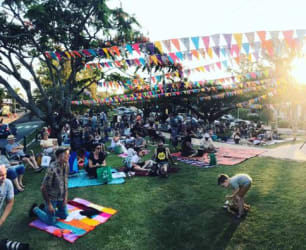Okay Google, technically ‘Backburning’ is a controlled burn, you’re right, but then so is ‘Hazard Reduction Burning’, so you’re really not highlighting the difference here! The public confusion over these two distinctly different burns is an issue that plagues fire brigades who are subjected to countless questions and complaints. Believe it or not, this common misconception is a bigger problem than you may think, as a lack of Hazard Reduction Burns can be highly dangerous.
Living the coastal lifestyle, our knowledge of the topic may be somewhat lacking, but the matter is too serious for smoke and mirrors. Not to worry! We chatted with the Manager of Bushfire Mitigation for the SouthEast Region, Inspector Joe Cullen, to address all your questions and concerns over environmental, health and safety factors.
So, let’s clear this up: the term so loosely thrown around by the media, ‘Backburning’, only refers to a controlled fire that is used to fight a bushfire which is already ablaze. Its purpose is to stop a wildfire from progressing by interrupting the available fuel (dry leaves, fallen sticks, branches and grass) so the fire can be contained before country and community are affected. On the other hand, Hazard Reduction Burning, termed ‘HRB’, is burning to reduce this fuel and prevent a wildfire from happening, or becoming uncontrollable if one should occur. If fine dry vegetation isn’t removed before the dry season, the chance of resulting destructive fires increases tenfold.
Now we’ve clarified that, (and don’t worry, there is no geography quiz), we should probably find out how the burning practice began and how it was informed. Over to our expert, Joe:
“The practice of burning country started centuries ago with our First Nations peoples. The Rural Fire Service builds partnerships and connections with our First Nations peoples to seek their advice and guidance to improve how we care for country by the way we use fire in the landscape. Their approach to burning should not be confused with Hazard Reduction burns, which focus mainly on protecting the community and infrastructure from the impact of unwanted bushfires.”
So, why do we need to be educated on this topic now?
“It is important we understand that our country needs fire to survive and grow. Many of our native species need fire to reproduce, as it provides disturbance and an opportunity for food to grow for different species. Fire is a big part of maintaining healthy ecosystems.”
When you think of the dangers associated with any large fire, it’s logical to place them in the ‘avoid all together’ category (along with putting candles on a cake for any age over ten!) Let Joe put your mind at ease:
“In context, a well-managed HRB has far less impact than a bushfire. The fires are conducted when the soil moisture is higher, thus reducing the impact to ground dwelling creatures and soil microbes. Typically a good HRB will be targeted at reducing the quantity of ground surface fuels… it won’t completely burn to the ground, which allows for quick rejuvenation. Heavy timber and animal habitats won’t burn at this time either, leaving the nests of native fauna intact. Flame heights remain low so the fires won’t scorch and kill trees, and lighting techniques will typically allow for animals to sense the fire and move away to stay safe. They are far more adept at living with fire than we are, and often thrive on the rejuvenation that a good fire brings. Understanding this and accounting for the fauna is part of responsible planning.”
What about pollution?
“While you can’t escape smoke, the amount of pollutants released from HRBs is far less than a bushfire, as less of the overall fuel burns. Often the same fire will burn slowly over a longer period; this is why you will notice lingering smoke during Winter to Spring.”
Most of the burning occurs in dry woodlands, whereas rainforests and scrubs are avoided to protect their delicate ecology. Evidently, severe bushfires are the ones to fear, as they are uncontrolled and difficult to manage. They produce more smoke in a shorter period of time, harming local communities of people, killing native fauna, rare timbers and soil microbes. They are the ones we have a responsibility to avoid. Yes, I said we, and here’s how…
Due to confusion and fear of respiratory problems, there is widespread hesitation among land owners and rural residents when it comes to making a burn plan to reduce risk. In Winter to early Spring, the Rural Fire Service make the rounds to assist landowners with risk reduction plans and undertake HRBs, but privately owned lands still require consent from the owner:
“Our aim is to minimise the impact of a bad bushfire and prevent a disaster, not exclude fire from the landscape entirely as a blanket approach. We need all Queenslanders to understand the area they live in. It could be you or a vulnerable family member that lives in a bushfire prone area. Make a plan to minimise the hazards around the property. Take action now and reduce the risk of a bad fire impacting your family.” Joe’s main message:
“Not all fire is bad!”
Your local fire brigade or Fire Warden are terrific providers of information, resources and advice. Get in touch today to talk about the next step in creating your HRB plan. One last thing… don’t try this at home without them!















